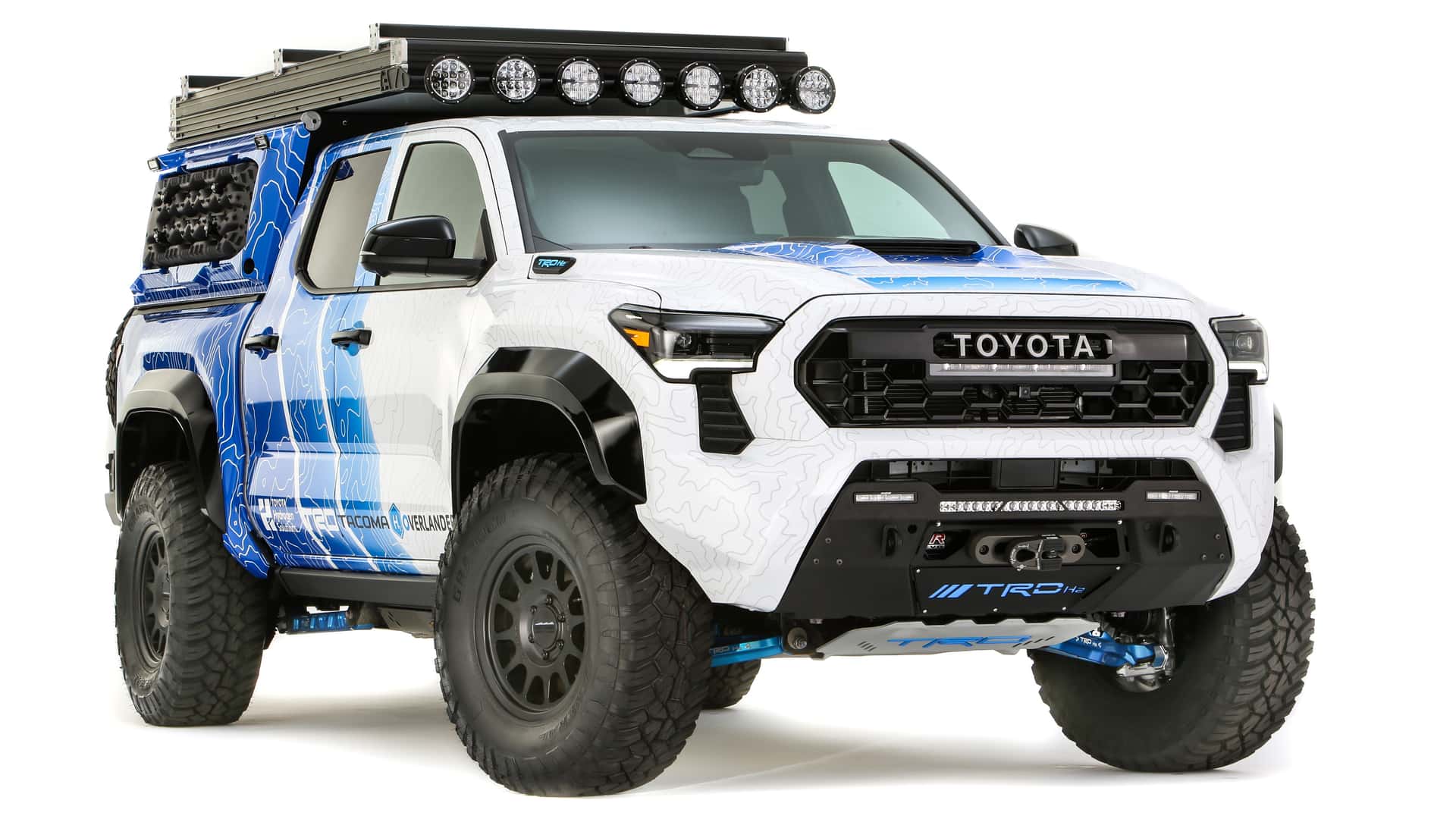
- Toyota reveals one-off Tacoma-based hydrogen fuel-cell overlanding vehicle.
- It borrows the fuel-cell from the second-generation Mirai and captures the resulting water vapor for other uses.
- Two electric motors give it 547 horsepower and other modifications make it perfectly suited for going off-road.
Toyota doesn’t intend to give up on the hydrogen fuel cell as a means to propel passenger vehicles, which it hopes to offer on a wider scale in its future, possibly even powering the next Corolla. The manufacturer is investigating the use of this technology to power all types of vehicles, and the latest is an off-roader called the Tacoma H2 Overlander concept. (Get it? H2O?)
It’s powered by two electric motors, which together produce 547 horsepower, making it quicker than any combustion Tacoma you can buy today. Instead of lugging around a 1,000-pound battery pack, this FCEV study only needs a 24.9-kilowatt-hour pack (approximately one-quarter of the size of a typical electric truck battery), as it can produce its own power on the go.
Toyota boasts that it can "charge your buddy’s EV in the great outdoors," which may well be true. But once you get out of said wilderness, one of those vehicles will still have an easier time finding a power source. At any rate, this does show how Toyota is continuing to work on interesting applications for next-generation powertrains, including hydrogen and EVs.
With this Tacoma, this feat is possible through the use of a second-generation fuel-cell stack borrowed from the Mirai and three pressurized hydrogen tanks. The hydrogen passes through the fuel cell, making electricity, which is then used to power the vehicle and replenish the battery pack. As with any FCEV, the only byproduct is water vapor, which, in this concept, is captured for other uses. The water isn’t fit for drinking, but it can be used for washing or showering, according to Toyota.
The concept doesn’t just produce power for itself. It can supply up to 15 kilowatts of power, which could be used to charge another EV, but also power appliances and even an entire house. This sounds like an ideal vehicle to be dispatched to help stranded off-road EVs. It has the gear necessary to traverse tough terrain (locking differentials, lifted suspension and all-terrain tires), and once it reaches the vehicle that has run out of charge, it could supply the juice needed to get it moving again.
Gallery: Toyota Tacoma H2-Overlander Concept







It was conceived and built in the U.S. on the same TNGA-F body-on-frame platform that underpins the standard Tacoma, but with modified axles and a custom electrical system. All the extra components were 3D-printed and Toyota says it was created in “just a few months.”
The manufacturer rushed to get it done because it’s set to debut at the 2025 SEMA Show, which kicks off tomorrow in Las Vegas, where it's meant as a poster vehicle for Toyota’s “commitment to innovation across every powertrain—gasoline internal combustion (ICE), hybrid (HEV), plug-in hybrid (PHEV), battery electric (BEV), and fuel cell electric (FCEV).”








